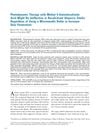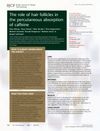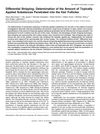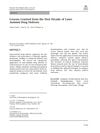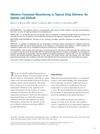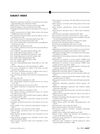Skin Permeation of Small-Molecule Drugs, Macromolecules, and Nanoparticles Mediated by a Fractional Carbon Dioxide Laser: The Role of Hair Follicles
November 2012
in “
Pharmaceutical research
”
TLDR Fractional CO2 laser treatment significantly boosts drug and nanoparticle skin absorption, especially through hair follicles.
The study evaluated the enhancement of skin permeation mediated by a fractional CO2 laser for various permeants, including hydroquinone, imiquimod, fluorescein isothiocyanate-labeled dextran (FD), and quantum dots. The laser treatment significantly increased the flux of small-molecule drugs by 2 to 5 times compared to intact skin. Specifically, a laser fluence of 4 mJ with a 400-spot/cm² density notably promoted FD flux at 20 and 40 kDa. Microscopic imaging showed increased fluorescence accumulation and penetration depth of macromolecules and nanoparticles post-laser exposure, with predominant delivery routes being intercellular and follicular transport. The CO2 laser irradiation enhanced follicular deposition of imiquimod by 13-fold. The skin barrier function recovered within 12 hours post-irradiation, much faster than the 4 days required for conventional laser treatment. The study concluded that fractional laser could selectively enhance permeant targeting to follicles, highlighting the importance of choosing suitable drugs for laser-assisted follicle delivery.
